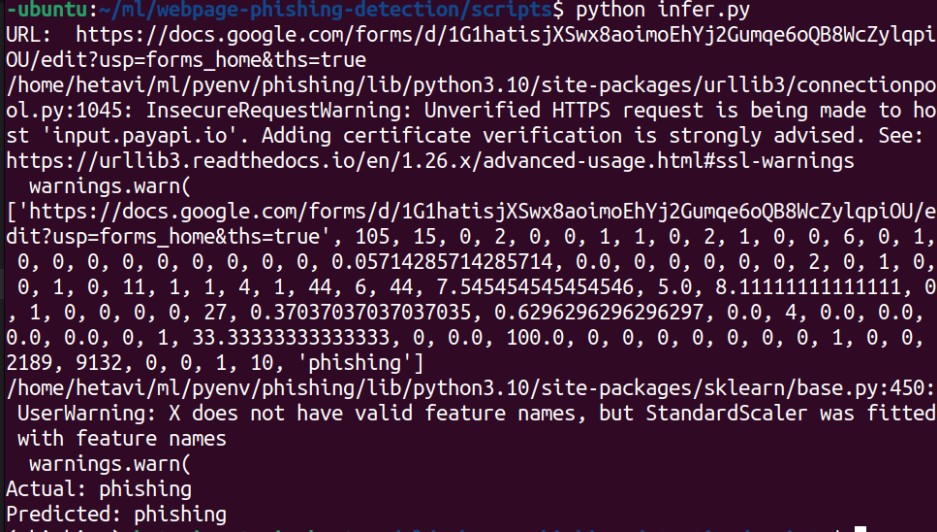Webpage Phishing Detection
ML based solution
Code
Abstract
In the era of online working in every field, the ratio of cyber attacks is increasing day by day. Among all cyber crimes, online fraud is one of the biggest malicious activities faced by the cyber world. In technical terms, online fraud is called phishing attack. The demand of opensource software that can only detect the phishing websites is increasing. There are many approaches being proposed and this project is one of them. This approach uses machine learning method to detect the phishing website only from the URL. Random forest (RF), Support Vector Machine (SVM) and Neural network (NN) are used as classifier because this approach is designed to solve binary classification problem and among all ML classifiers, these 3 can give high accuracy and more accurate result.
Out of these three classifiers, SVM gives the poor accuracy – 69 % only. One the other side, RF and NN give same 96 % accuracy. These models can be used for building further detection system. The system which generates features of the URL itself and uses that result to predict the final class label – ‘legitimate’ or ‘phishing’. There are some dependencies (limitations) of this approach: The given URL has to be active and it has to generate exact 87 features used to train the ML models. This approach can be extended by creating basic browser extensions that everyone can use.
Structure of the URL
Phishing attack can be done in many ways. One of the techniques to conduct phishing attack is by tempering with URL and its component. Attacker can make few minor changes that a normal user cannot see or notice and could become a victim of phishing attack. For a normal user, URL refers as a whole link without knowing its components yet, it is important to know the components and parts of URL that makes the entire working URL structure. Different components of URLs are described below:
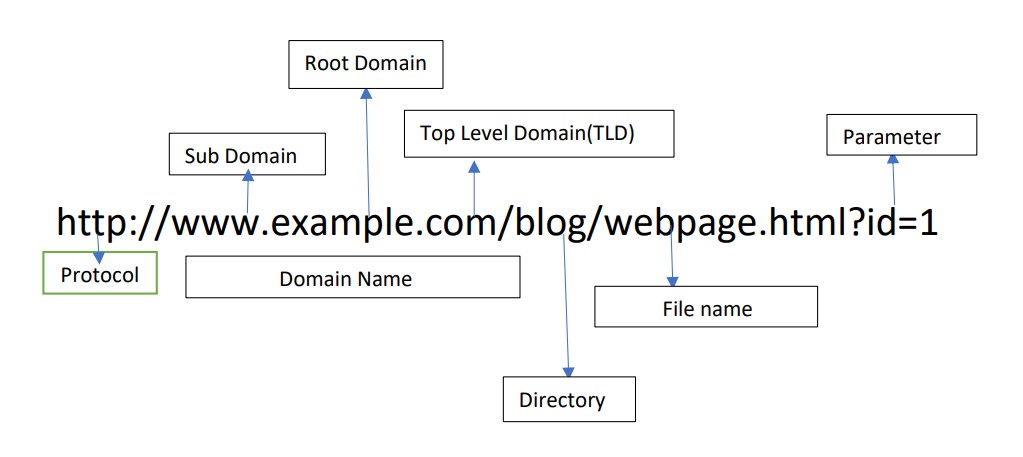
Dataset
The dataset is created by Hannousse, Abdelhakim; Yahiouche, Salima (2021), “Web page phishing detection”, Mendeley Data, V3, doi: 10.17632/c2gw7fy2j4.3
The dataset used for this project is having some “legitimate” URLs, few “phishing” URLs and the features with the class label phishing and legitimate. The dataset contains 11430 URLs divided into 50% legitimate URLs and 50% phishing URLs and this latest updated version is published in June 2021.
These features are extracted based on the structure of the URLs, the content of the corresponding web pages and some are from the querying external services. First 56 features are related to URL structure followed by 24 features of the content of webpages and 7 features of the querying external services.
The last column of the dataset specifies the class label. The reason behind selecting this dataset is it focuses maximum number of URL features as the major concern was to build a system which focuses more on the URL.
Data Analysis
The plot show’s the importanct of numerical values to predict website phishing or not,
- Higher the length of URL, the ratio of being phishing is also high
- High the length of hostname, chance of being legitimate is less.
- More the length of Longest_word_raw and longest_word_path, high possibility of being phishing website.
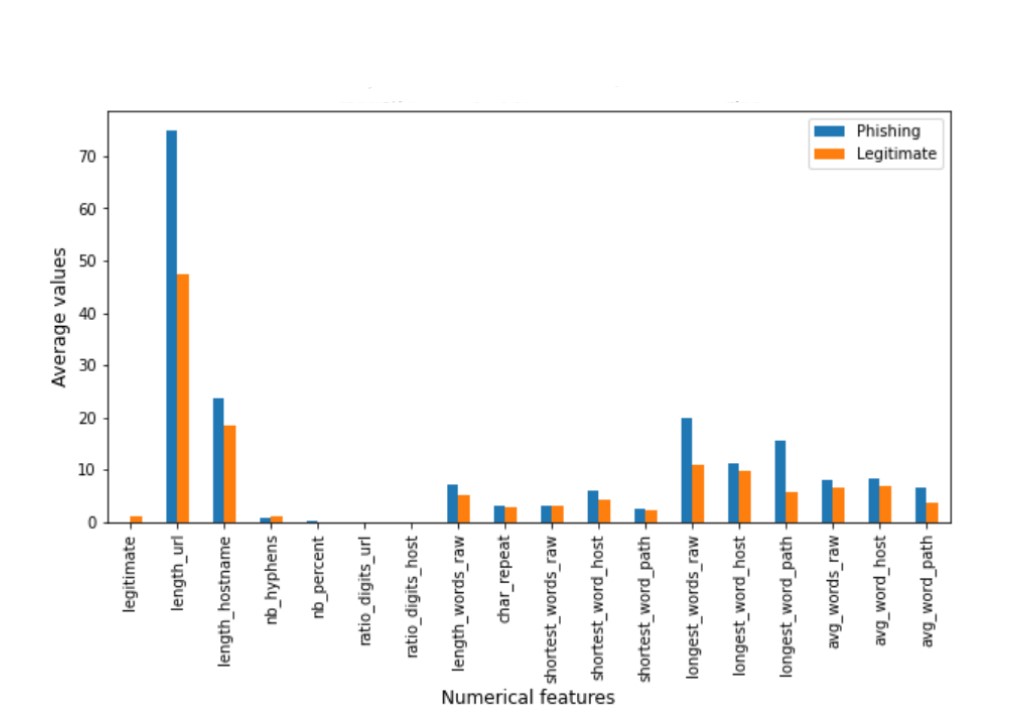
In the case of all features, there are 30 numerical data features and 59 categorical features (includes class label column as well). The correlation matrix of numerical data features is shown in this figure. From the figure, the majority relation matrix is made in the middle corner which is same as the obtained from the URL features. All 14 relations obtained from the previous URL features are still described the strong relation. Five more relationships are seen in the case of all numeric features. 1st is, ratio_inthyperlinks and safe_anchor, 2nd is ratio_inthyperlinks and ratio_intMedia, 3rd is ratio_inthyperlinks and links_in_tags, 4th is ratio_exthyperlinks and ratio_extMedia, 5th is links_in_tags and ratio_intMedia.
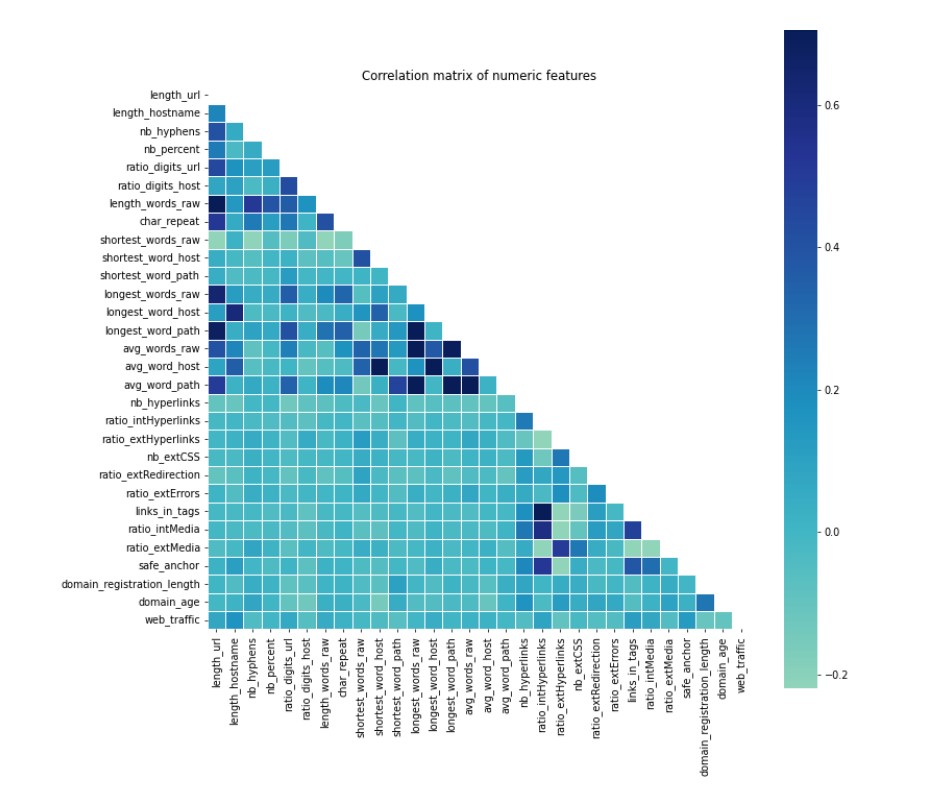
The impact of numerical data features over the class legitimate and phishing has been derived from the average values of numerical data. The observation of the following graph is: In the case of all features, compared to other numerical data feature, web_trafficing is the only feature which reflects direct on the class output.
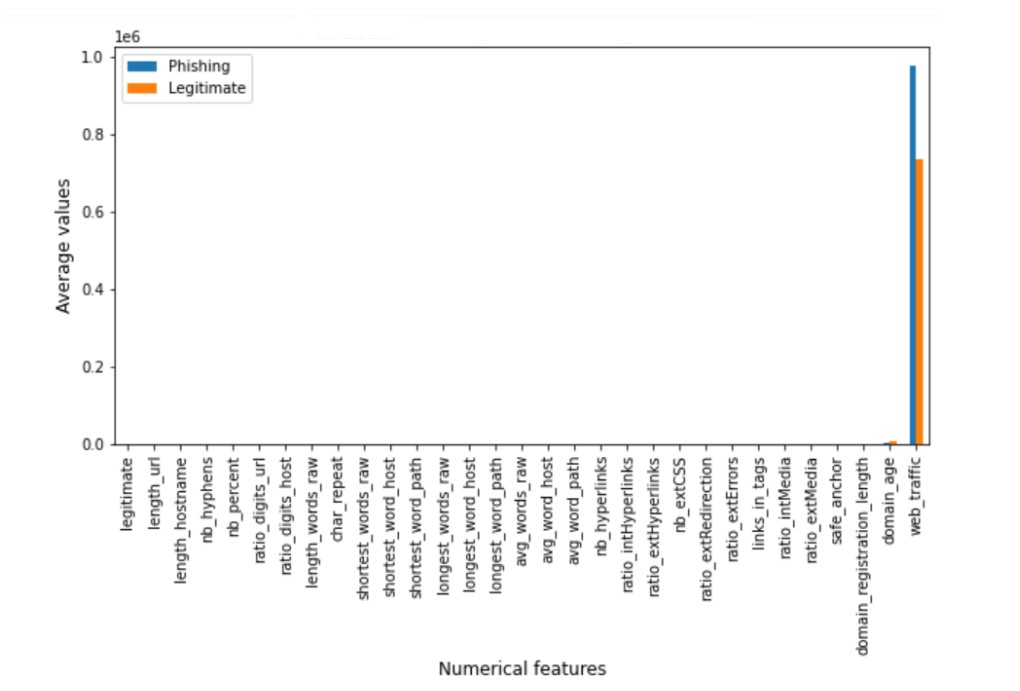
Output of various methods
Various machine learning algorithm used with different parameters, here is the table to review all the experiments:
| Algorithms | features | Parameters(specific) | Acuuracy(%) |
|---|---|---|---|
| SVM | URL only | C=1000 | 42 |
| C=100 | 42 | ||
| C=1 | 42 | ||
| SVM | all | C=1 , kernel = linear | 69 |
| C=100 | 69 | ||
| RF | URL | n_estimators=20 | 90 |
| n_estimators=40 | 91 | ||
| n_estimators=60 | 91 | ||
| RF | all | n_estimators=20 | 96 |
| n_estimators=40 | 96 | ||
| n_estimators=60 | 96 |
Inference
